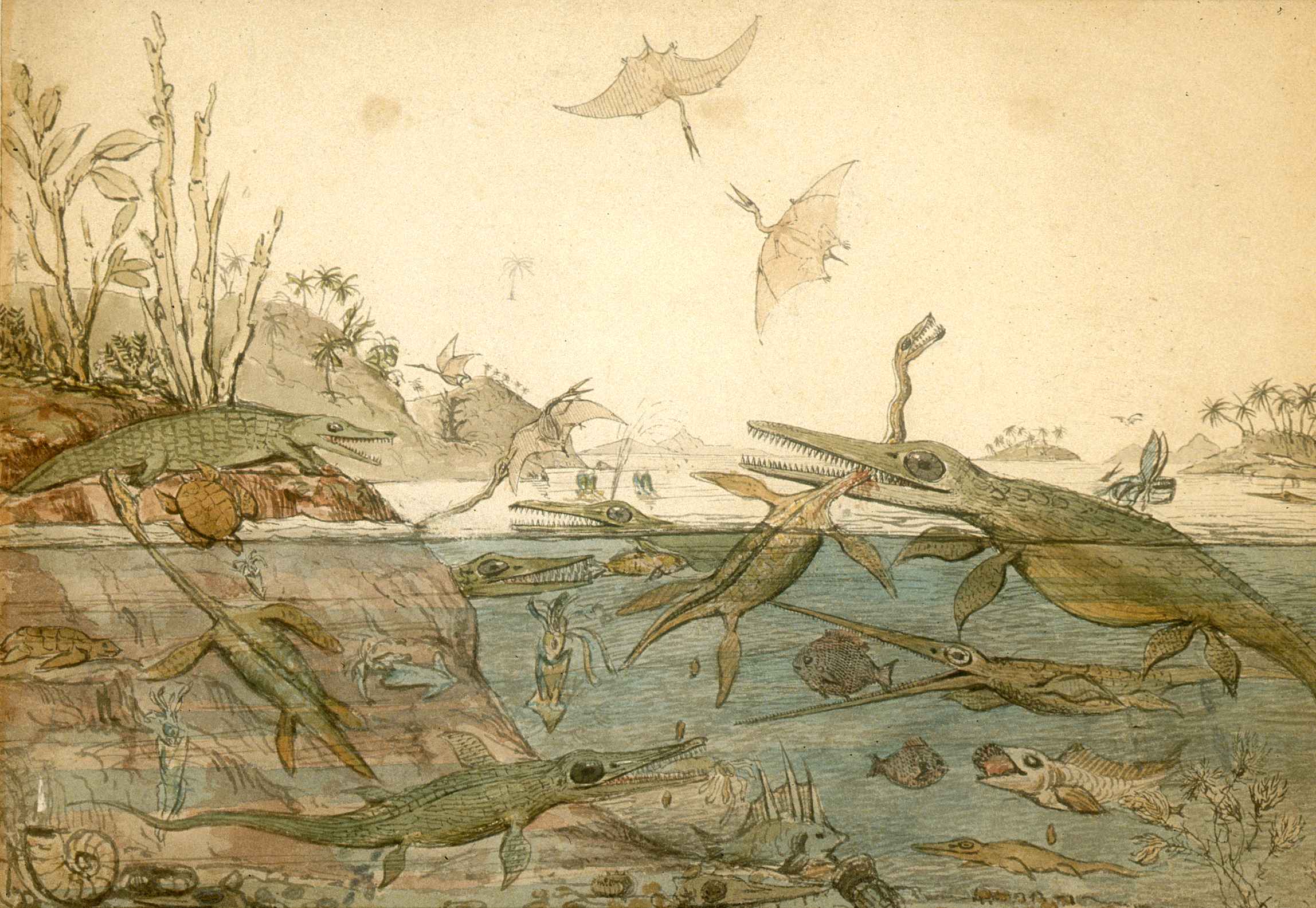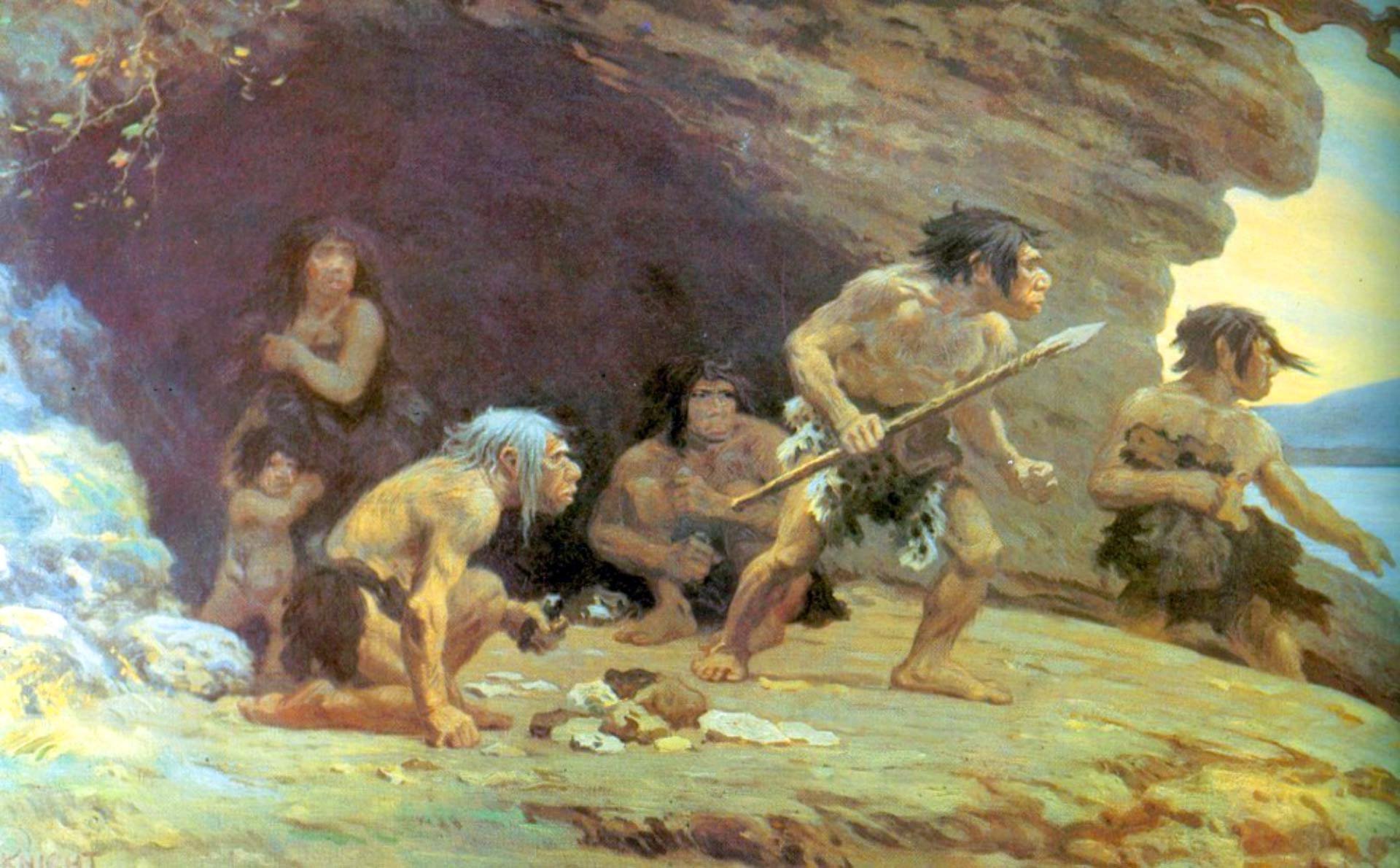I now realise that this view was incorrect. The fact that people of colour are still fighting against global systemic marginalisation and persecution shows that being non-racist isn't enough, and that we must be outspokenly anti-racist, even if we have never experienced racial discrimination ourselves. Some may accuse me of jumping on a bandwagon with this. That's accurate, but I don't care. This is a wagon we should all be on, and I'm ashamed for not being on-board earlier.
In reflecting on racial issues for much of this week, it's been difficult to escape how prevalent racism is in Western culture once you open your eyes to it. Even palaeoart, which outwardly seems like an entirely innocent endeavour largely uncomplicated by social conventions, has been tainted. Palaeoart has actually been associated with suppression of non-white people both indirectly and rather pointedly, and not through obscure works or people, either. Famous historic figures, who are justifiably held in high regard for their scientific and palaeoartistic work, are part of this story. We're talking about people like pioneering European scientists - George Cuvier and Henry de la Beche - as well as pivotal American figures - Edward Drinker Cope, Charles Knight and Henry Fairfield Osborn - actively benefitting from black oppression or contributing to the thoroughly debunked pseudoscientific field of biological racism (the attempted justification of racist views with scientific study). The racist history of palaeoart thus hides in plain sight, and the fact that this seemingly innocuous branch of natural history illustration has this darker side is a great example of how rooted prejudice is within Western culture.
 |
| The first true palaeoart scene, Duria Antiquior, by geologist, palaeoartist and slave owner Henry de la Beche. |
Three of the above-mentioned figures did not outwardly produce racist palaeoart, but strongly promoted or benefitted from racism against black people in other facets of their lives. Cuvier, who produced some of the first musculoskeletal reconstructions of fossil animals and was among the first to publish animal life reconstructions in academic works, viewed whites as the pinnacle of creation, but blacks as ugly, barbaric persons of monkey-like appearance. His work on dividing humans into 'scientifically validated' races was instrumental in later attempts at biological justifications of racism. De la Beche, famous for producing the first palaeoart scene in 1830, Duria Antiquior, owned a Jamaican slave plantation and was against the abolition of slavery. Cope, who drafted some of the first American palaeoart and mentored Charles Knight in the anatomy of prehistoric animals for a short period, wanted to see black people returned to Africa, and viewed them as degenerate forms of humans with animalistic levels of self-control.
Knight and Osborn, however, produced palaeoart that was genuinely racially offensive. It's not clear to me what Knight's views on race were*, but Osborn's racism, eugenicism, his support of Hitler, and his exploitation of his presidency at the American Museum of Natural History to research and promote his racist agenda, are well-documented historical facts. It was under Osborn's direction that Knight produced many now-iconic artworks of prehistoric animals in the late 19th and early 20th century but, while dinosaurs and fossil mammals can be restored without overt social agenda, Osborn's racism was captured in oils when it came to producing art for the AMNH's Hall of Man in the 1920s. Osborn viewed white Europeans as occupying a particularly high branch at the top of the evolutionary tree, with other races and hominid species well inferior. His Hall of Man exhibition sought to present the same view to the public, despite its lack of traction among his scientific peers. Neanderthals were thus shown as much more primitive, both culturally and anatomically, than modern humans, and Osborn ordered them to be restored as brutish and ape-like in Knight's famous Hall of Man mural, Neanderthal Flint Workers. But rather than pointing to apes or monkeys for 'primitive' anatomical references, Osborn pointed to non-white races that he regarded as inferior for details of skin colour and physique. The symbolism here is as gross as it is obvious, and makes the Osborn/Knight Neanderthals the palaeoartistic equivalent of golliwogs, minstrels and mammy figurines. Although this work was controversial among museum staff even when it was produced, and was removed in the 1960s out of recognition of its racist connotations, it remains an iconic, oft-used and oft-referenced illustration even today. Indeed, most popular depictions of Neanderthals are variants on this image: a dark-skinned, black-haired brutish caveman. How many artists, cartoonists and film directors know that their cavemen or Neanderthal depictions are a visual representation of eugenics and racism?
*Passages in Knight's book Prehistoric Man: The Great Adventurer (1949) suggest he shared Osborn's ideas that modern humans evolved in central Asia and not in Africa, and show that he viewed some non-Western cultures as 'primitive', but I'm not aware of any more pointed statements aimed at people of colour.
These are just a handful of easily researched examples of racism touching historic palaeoart, but there are more - particularly in depictions of human evolution. I will be accused of wanting to censor or vilify the figures mentioned above, so want to stress that this is not the point of this piece. The historic significance of these individuals and their contributions to science remain unchanged regardless of their personal views, and I don't regard it as fair to judge people living centuries ago, under very different social norms, by modern standards. Recognising and respecting the objective historic importance of their work is not the same as condoning their racist views. This said, I do condone the retiring of offensive works, such as Neanderthal Flint Workers, and believe that we should not shy away from discussing the racist views of key figures in the history of palaeontology. This is especially so for Osborn-like individuals, who had professional lives strongly influenced and guided by racist agendas.
I'm not sure what good discussing the above will do, but feel that saying something, and acknowledging the sometimes sketchy history of the discipline I work in, is important. It's an opportunity for folks like myself, who have never known the difficulties or prejudice, to say that we're listening, that we understand where we've gone wrong in the past, and that we stand with other races in their quest for fairer treatment and representation. The fact that racism has even touched and shaped palaeoart, a field which I think should be free of agenda and discrimination, is unnerving and sobering to me, especially since it involved artists and scientists who laid down its foundations. Some of the people we've discussed here are personal heroes of mine. And lest we forget, palaeoart is primarily an educational tool, and yet we've seen - via Neanderthal Flint Workers - how it can be corrupted not to show ancient realities, but to promote racist agendas. This is why Black Lives Matter is such an important movement, even if we are not black ourselves: we all have to reflect on the historic and modern ubiquity of anti-black racism if we want to stamp it out.
I began this post with an admission that I have arrived late to this cause, so want to end on a more positive and proactive note, by stating what I intend to do moving forward. I mention this in the hope that it will inspire similar action in others. Firstly, I will be making sure that my future public lectures on palaeoart acknowledge the human cost of early palaeoartworks. I will not be derailing my talks into anti-racist events, but it's nothing to point out that 19th century science had links with slavery and attempted to scientifically prove the inferiority of black people. We shouldn't just let that slide.
Secondly, I intend to obtain a deeper understanding of the pseudoscience of biological racism as well as the recent history of racism in Western nations. I have books on these topics lined up to listen to while working on art projects over the next few weeks - audiobooks being the most effective way for me to digest long reading material, as I rarely get enough time to read traditional books cover-to-cover. I especially want to know more about racism in the UK, as it remains a huge issue, but does not always get the attention it deserves.
Finally, I am also already taking a more active role in standing up to racism in online communities in an effort to provide a better online experience for people of colour. This includes taking a firm line on excluding racists from my social media. Blocking racist accounts, reporting and deleting offensive comments and calling out racism should be the norm in any decent community, but social media groups I'm part of are often surprisingly lenient on overtly racist commenters, even when their guidelines suggest otherwise. It's important to curate communities where people of any skin colour can enjoy themselves unharassed, and asking people to respect their fellow humans is a small price for engaging with their favourite scientists, artists and science communicators. Remember, our online platforms are not democracies: we get to call the shots about what is acceptable.
These are minor steps, but they are a start. Again, I'm not entirely sure what I hope to achieve with this post - perhaps it's simply a cathartic act to express and organise my recent thoughts on this topic. But I hope in sharing this that it inspires some good elsewhere, or at least shows one more supporting voice for a worthy cause.

